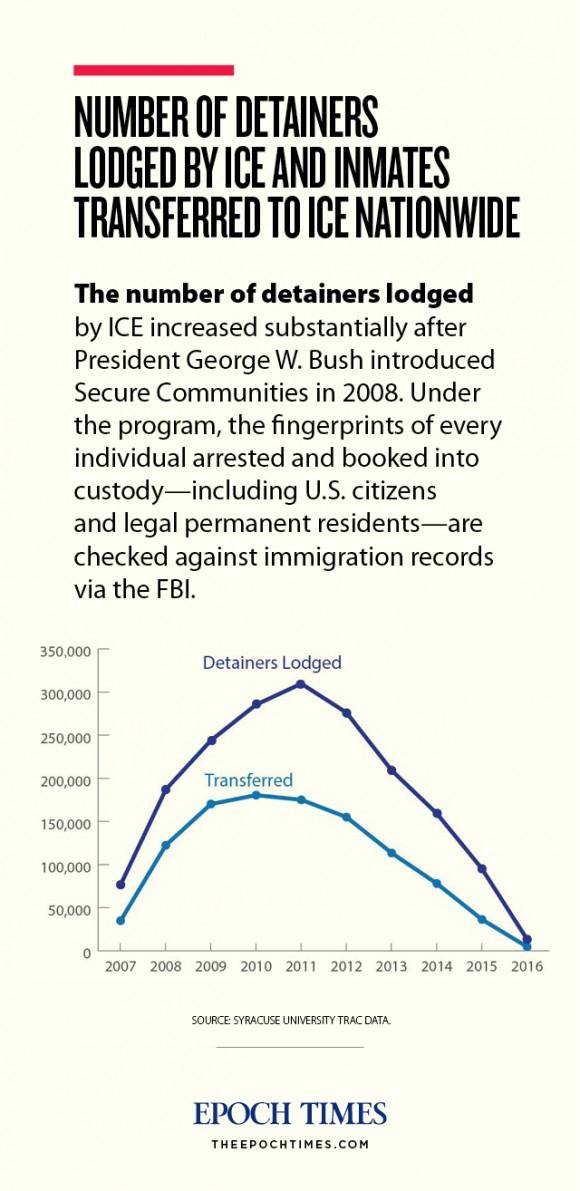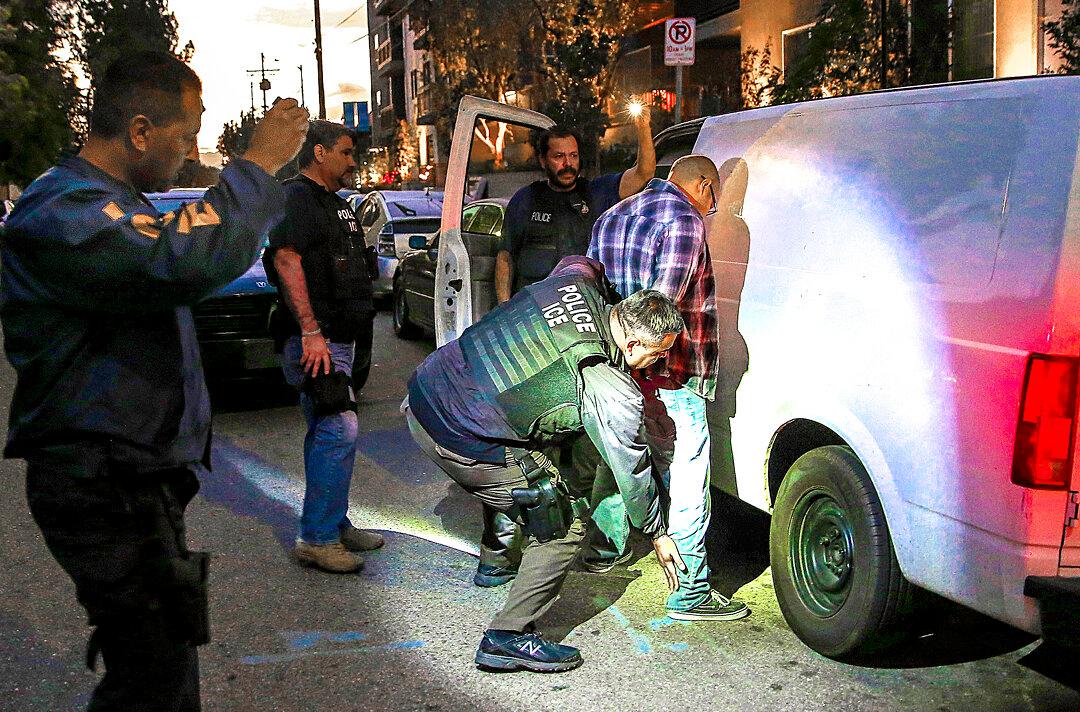NEW YORK—The number of illegal immigrants handed over to authorities nationwide is less than 3 percent of what it was six years ago, thanks to a suite of sanctuary policies at the local level combined with a hands-off approach at the federal level in recent years.
The New York and Los Angeles metro areas are the most popular destinations for illegal immigrants in the country. New York City has an estimated 500,000 illegal immigrants, according to the mayor’s office.
New York City Mayor Bill de Blasio has vowed to oppose President Donald Trump’s executive order that promises to ramp up interior security and penalize jurisdictions that “willfully violate federal law in an attempt to shield aliens from removal.”
De Blasio said New York City already cooperates with federal agencies when necessary. The city says it shares information with the feds if an illegal immigrant commits any of 170 crimes listed, including assault, rape, arson, terrorism, and firearms and drug offenses.
“These are serious offenses, violent crimes. This is the law of New York City, has been for years. It’s been the basis for productive cooperation with the federal government,” de Blasio said at a live-streamed press conference on Jan. 25.
In fiscal 2016, Immigration and Customs Enforcement (ICE) submitted 80 inmate detainers to the NYPD, according to the mayor’s office. A detainer is a request to local law enforcement to hold an inmate for up to 48 hours longer, for investigation and possible transfer to ICE custody.
Of the 80 detainers lodged, only two criminals were transferred to ICE, according to the mayor’s office.
The two were handed over because the city was presented with either a judicial warrant or a subpoena for their transfer to ICE, the mayor’s office said.
During the same year, the Department of Correction (DOC) received $10.5 million in federal money for “criminal alien assistance,” which is meant to reimburse costs related to the detention of certain illegal immigrants, according to a city official.
De Blasio says the current system is working. “It’s helped to keep us safe without undermining the relationship between our police and our communities,” he said.
But, according to ICE, the cooperation from city law enforcement is limited.
The vast majority of ICE’s requests for the hold and transfer of inmates are ignored by the hundreds of local jurisdictions that have sanctuary policies.






